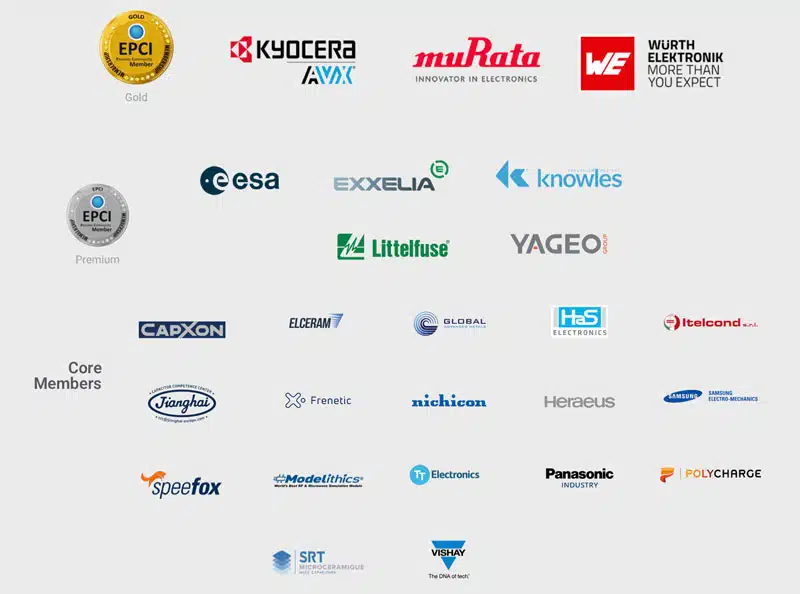In January 2025, we celebrated a momentous milestone—the 10th anniversary of the EPCI European Passive Components Institute and its influential Passive Components blog, passive-components.eu.
Over the past decade, EPCI has stood as a lighthouse of knowledge and information sharing in the realm of passive electronic components. We’ve provided invaluable resources, including blog posts, free newsletters, and insightful articles, catering to professionals and enthusiasts alike.
Our unwavering dedication to gathering, promoting, and sharing knowledge about passive components has been the driving force behind our success. Today, over 30,000 visitors from around the world engage with our services monthly.
These achievements are a testament to the unwavering support of the passive components community. Electronic hardware engineers, quality and component engineers, buyers, and strategic marketing managers from diverse industries actively utilise our resources, whether through direct access, search engines, or our AI chatbots.
We extend our heartfelt gratitude to our esteemed gold sponsors and supporters who have been instrumental in our journey from the very beginning: KEMET, now part of YAGEO Group, KYOCERA AVX, MURATA, and Würth Elektronik. Their unwavering support has enabled the smooth operation and further growth of the EPCI.
„10 years of EPCI is something to celebrate! The purpose of this great organization is to share knowledge within the industry and to students. We see in our daily business how important it is to increase knowledge about passives. It is essential for a valid design. Congratulations to EPCI!”
Alexander Gerfer, CTO Würth Elektronik eiSos Group
„An unbelievable success story. 10 years of EPCI!!! Tomas Zednicek a founder relentlessly is promoting the importance and innovation of Passive Components in the Electronics Industry. I have a good memory about all the events EPCI hosted and from Murata side we congratulate and are happy to support also in the future!“
Rüdiger Scheel, Vice President Mobility at Murata Electronics Europe
Throughout the years, EPCI has developed a range of supportive tools for the passive components industry:
- EPCI Newsletter: A weekly newsletter for all passive components or a monthly newsletter of your choice, filterable by component types, applications, or market overview interests.
- Knowledge Blog: A continuously updated and expanded library of knowledge articles on passive components, prepared by EPCI and its partners. This resource is frequently used by electronic hardware engineers and ranks highly in search engines and AI chatbots as a reliable and independent reference on passive electronic components knowledge.
- EPCI Academy: offers online courses for students and professionals (with a pass exam and certification) at www.epci-academy.eu.
- WHO is WHO in Passives is a filterable and searchable database of passive components manufacturers and suppliers.
- The PCNS Passive Components Networking Symposium is a bi-annual event hosted by a European university. The 5th PCNS will be held in September 2025 in Sevilla, Spain, hosted by the University of Sevilla under a partnership with Alter Technology.
- e-Symposium provides full text of technical papers and PDF files from PCNS and ESA SPCD conferences (under ESA SPCD organizers’ permission).
On the occasion of EPCI’s ten-year celebration, our esteemed long-term partners have shared their warm regards:
“As we celebrate the remarkable 10th anniversary of the European Passive Components Institute, we reflect on the vital role EPCI has played in advancing knowledge, collaboration, and innovation within the passive components industry. Over the past decade, EPCI has established itself as an invaluable resource, providing high-quality content and fostering a global community of professionals committed to excellence in electronics.
Our partnership with EPCI is a testament to our shared vision of empowering engineers, quality experts, and industry leaders with the tools and insights they need to succeed. We remain steadfast in our support of EPCI’s initiatives, including their informative blog, comprehensive online courses, and the PCNS Passive Components Networking Symposium, which continues to drive meaningful dialogue and innovation across the field.
As a proud Gold Sponsor, we are committed to furthering EPCI’s mission of promoting education and collaboration in the years ahead. Here’s to another decade of shared success and the continued advancement of passive components!”
S. Willing King, Senior Vice President, Kyocera AVX Components Corporation
“EPCI has established an exceptional platform where industry professionals can access the latest advancements and insights in passive component technology. These efforts help drive our industry forward by highlighting the crucial role that passive components play in enabling technological transformation. Congratulations on your first 10 years!”
John Gallagher, Vice-President, YAGEO Group.
In addition to the key gold sponsors, we are grateful to over twenty other companies from the passive components supply chain that support our operations under the EPCI membership umbrella. Their contributions significantly enhance the success of the Passive Components Blog.
As we look to the future, EPCI remains committed to fostering communication, collaboration, and education within the passive components industry. We are excited about the opportunities that lie ahead and are eager to continue our work in pushing the boundaries of what passive components can achieve. In 2025, we have modernized the website’s graphical appearance and expanding our coverage to include more from interconnection and electromechanical components.
Here’s to another decade of growth, support, and success! We extend our heartfelt gratitude to all visitors, supporters, partners, and readers for being a part of this journey.
Stay Active in Passives!
Visit passive components blog website at: www.passive-components.eu
Thank to our EPCI membership partners for their continuous support:

































